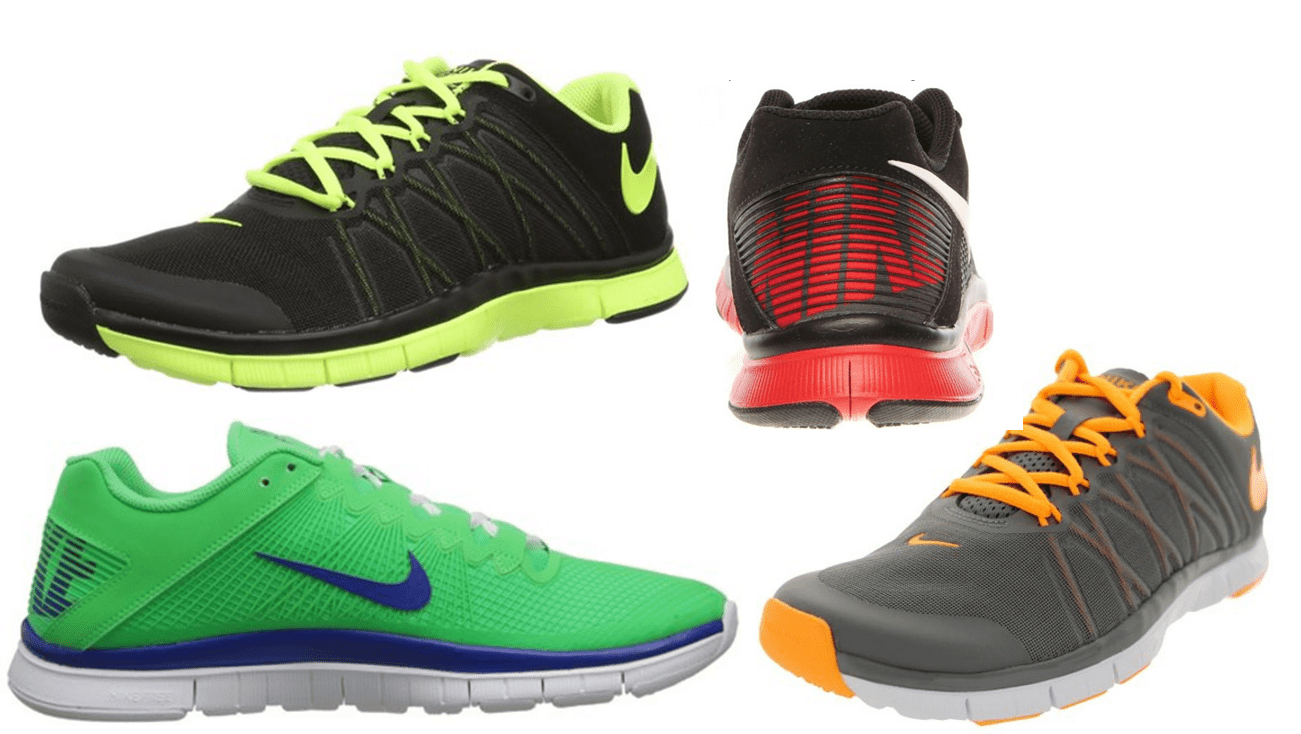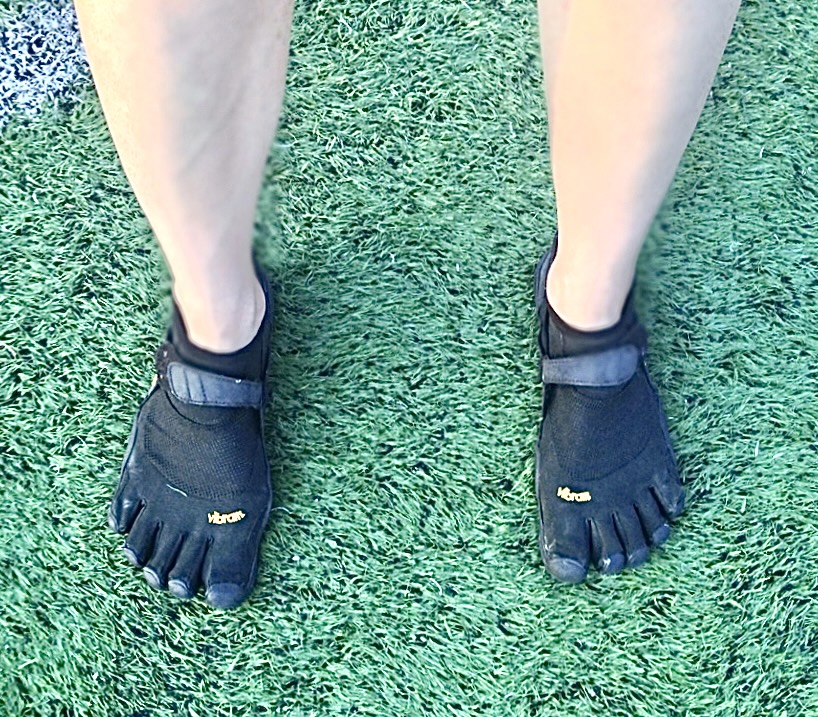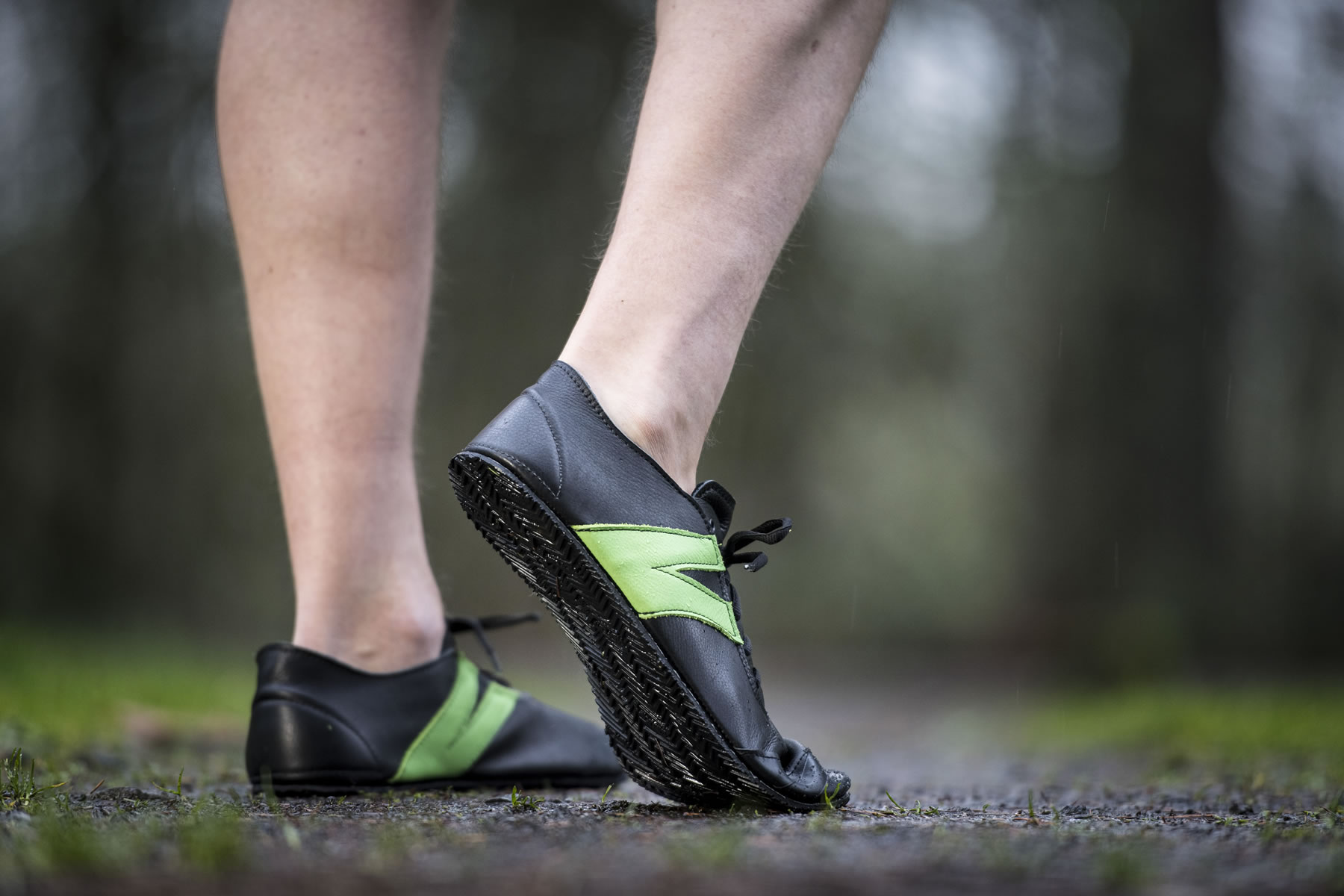Consistent with the research, functional improvements in your running form depends on the amount of sensory input (ground-feel) acting on your underfoot. This is because our feet are densely populated with their own sensors and controllers which help coordinate basic, functional movements.


Most relevant, barefoot running and running in minimalist running shoes, which are functional footwear designed to mimic being barefoot, are consistently justified in a number of pioneering studies for improving running form and foot strength in more ways that the conventional running shoe could never do.
The Nike Free is marketed as a barefoot shoe but this is a misclassification since the Free is not zero-drop because more padding is under the heel than the toe-box. Whats worse, the Free contains some arch support, while the sole is just as thickly cushioned and rigid as the conventional running shoe. This means the Free does not provide the immediate ground-feedback needed to get your forefoot running mechanics in proper order.


The latest research has shown theres nothing about the over-hyped Nike Free that is barefoot-like. This is because for one, the Nike Frees thick and rigid cushioning was found to push the foot into extreme positions which would increase the amount of rotational stress and torsion on the leg. For another, the padded, raised heel was found to make it easier to heel strike than to forefoot strike. It’s for these reasons that the Free is not a quick fix for improving motor performance like barefoot running and real minimalist shoes are.
For instance, a study by Hein and Grau compared the kinematics of barefoot runners with runners in the Nike Free 3.0.
Note: the barefoot runners in the study were shod-heel strikers with no experience with barefoot running. They learned barefoot running independently without ‘proper’ instruction.
The study revealed the Nike Free 3.0 runners had greater rearfoot inversion at touchdown and during stance and had a more dorsiflexed ankle upon heel strike compared to the barefoot runners. This means the Nike Free runners landed with a more force- intensive heel strike and more pronation, which a lot of injuries stem from vs forefoot running.
These findings are consistent with other evidence showing that thicker cushioned shoes, like the Nike Free, produces an assortment of mechanics involved in injury. These mechanics include abnormal foot motions (hyper-pronation) and a more pronounced heel strike landing, which taken together, strains more muscles in the leg.

The Take Home Message
The reason you’re not making enough progress with the Nike Free is because foot mechanics in running is strongly influenced by footwear and ground-feedback is a prerequisite for successful mechanical corrections.
To make the most out of improving your running form, running barefoot or in actual barefoot-like shoes are always better because you elicit the strongest corrective responses, resulting in far less impact.
Need more convincing? Here are more specifics showing that barefoot running is the most effective therapy to enrich your biomechanics while making your feet stronger than ever!
If you’ve enjoyed this post, you’ll LOVE my YouTube channel, here, where I show why forefoot running is safer and more economical than heel strike running.

If you’d like, you can support Run Forefoot and help keep it going by making a donation in any amount of your choosing:

Or, you can support Run Forefoot by shopping at the BEST Barefoot Shoe Brands, and be sure to bookmark these links 🙂
Saguaro: https://www.saguaro.com/?ref=9bVA8fEkmDvB-I
Vibram FiveFingers: https://www.anrdoezrs.net/click-7600968-11372648
Vivobarefoot: https://amzn.to/3vycQOY
Be Lenka: https://www.dpbolvw.net/click-7600968-14330828
Xero Shoes: https://xeroshoes.com/go/Run_Forefoot
Iguaneye: https://www.iguaneye.com/?ref=8tfXVc92
Soft Star Shoes: https://shrsl.com/3mp1b
Wilding Shoes: https://bit.ly/3lIygQP
References:
Hein, T. and Grau, T. (2014). Can Minimal Running Shoes Imitate Barefoot Heel-Toe Running Patterns? A Comparison of Lower Leg Kinematics.
Bretta Riches
BSc Neurobiology; MSc Biomechanics candidate, ultra minimalist runner & founder of RunForefoot. I was a heel striker, always injured. I was inspired by the great Tirunesh Dibaba to try forefoot running. Now, I'm injury free. This is why I launched Run Forefoot, to advocate the health & performance benefits of forefoot running and to raise awareness on the dangers of heel striking, because the world needs to know.
Latest posts by Bretta Riches (see all)
- Can You Run In Barefoot Shoes? Yes, But DON’T Heel Strike! - 21/07/2024
- Why Cushioned Running Shoes Are Really Bad for Your Feet - 19/07/2024
- Do Cushioned Running Shoes Cause Injuries? - 17/07/2024

Leave a Reply